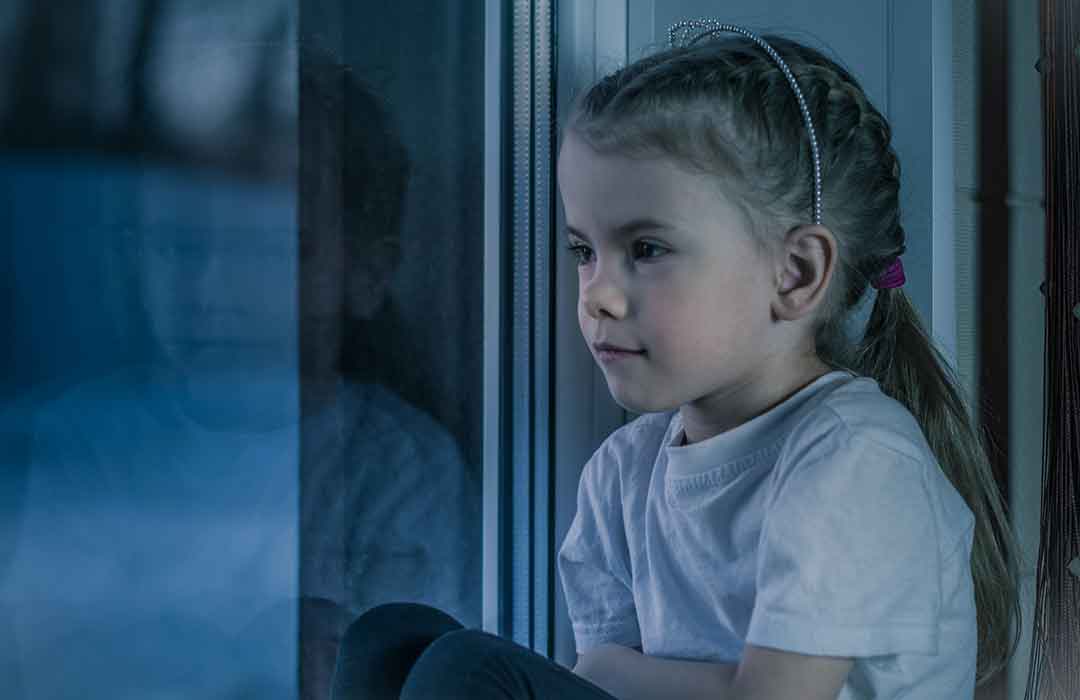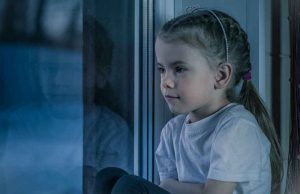
- A new study suggests that social isolation in childhood has a harmful impact on an area of the brain that regulates social behavior in adulthood.
- Researchers from the Icahn School of Medicine at Mount Sinai experimented with male mice to observe the effects of social isolation.
- They found that isolation in childhood 1) led to “excitability” of the prefrontal neurons projecting to the paraventricular thalamus and 2) led to “increased inhibitory input” in other regions of the brain.
- This study helps researchers better understand the neural circuit mechanisms that are involved with isolation in childhood and its adverse effects on sociability in adulthood.
- Researchers are hopeful that, if these findings are replicated in us humans, they will be able to better develop treatment for mental illnesses that are connected to loneliness and isolation, like depression and autism.
- In addition, this research reminds us that our socially isolated world, due to COVID-19, is likely in store for a range of negative mental health implications for years to come.
- Fortunately, researchers are digging in and using their study results to develop new, effective treatments that will ultimately help people live better.
Quick Summary
A new study “A prefrontal-paraventricular thalamus circuit requires juvenile social experience to regulate adult sociability in mice” suggests that social isolation in childhood has a harmful impact on adult brain functioning and more specifically, in an area of the brain that’s responsible for regulating social behavior. In addition to bringing attention to the impact that today’s isolated world might have on children in their adulthood, this study helps us better understand the medial prefrontal cortex and its role in social isolation and impaired social functioning.
Goals and Investigation
Researchers from the Icahn School of Medicine at Mount Sinai experimented with male mice to observe the effects of social isolation. The team discovered that after two weeks of isolation, the medial prefrontal cortex neurons of these male mice failed to activate during social interactions in adulthood. In addition, the team found that:
- Isolation in childhood led to reduced “excitability” of the prefrontal neurons (which are involved with higher cognitive functions like problem-solving and planning), projecting to the paraventricular thalamus (which serves as an intersection for brain reward circuits).
- Isolation in childhood led to “increased inhibitory input” in other regions of the brain, which suggests that there may be underlying sociability shortcomings
Next, the research team wanted to see if they could restore the shortcomings that these adult mice experienced as a result of their social isolation. The researchers used optogenetics, a technique that involves using light to control neurons, in order to stimulate the prefrontal area of the brain. They also used chemogenetics, which involves engineering cells to interact with others. The use of both of these techniques enabled researchers to increase social interaction in these mice quickly.
Implications
This study helps researchers better understand the neural circuit mechanisms that are involved in this transaction of social isolation in childhood, its implications on socialization in adulthood, and the development of mental illness. Loneliness and social isolation plays a huge factor in many of these illnesses, such as autism, depression, and schizophrenia. Researchers are hopeful that, if these findings are replicated in us humans, they will be able to better develop treatment for mental illnesses that are connected to loneliness and isolation.
In addition, this research reminds us that our socially isolated world, due to COVID-19, is likely in store for a range of negative mental health implications for years to come. The good news is that researchers are digging into their findings and using their study results to develop new, effective treatments for the illnesses that are affected by social isolation. In the meantime, be sure to stay connected: schedule regular Zoom dates with friends, check up on family members often, and find other ways to engage with others. And don’t forget about your children—do what you can to help them curb social isolation.
Limitations
This study was conducted on male mice; it will need to be conducted with human participants to see if the same results are yielded.
Sources
Yamamuro, K., Bicks, L. K., Leventhal, M. B. et al. (2020, August 31). A prefrontal-paraventricular thalamus circuit requires juvenile social experience to regulate adult sociability in mice. Nature Neuroscience. Retrieved August 31, 2020 from https://www.nature.com/articles/s41593-020-0695-6
(2020, August 31). Researchers Discover a Specific Brain Circuit Damaged by Social Isolation During Childhood. NeuroscienceNews. Retrieved August 31, 2020 from https://neurosciencenews.com/social-isolation-children-circuit-16935/
Let’s keep in touch! Sign up to receive our newsletter:
Start a Relationship with An Exceptional Counselor
- Skilled and caring professional counselors
- Accepting all major and most insurances
- High-touch customer service & premium benefits
- Same- or next-day appointments
- Ultra-flexible 23.5hr cancellations














“Researchers” won’t be able to do anything. There is no cure for loneliness. I’ve been taken out of school because of the lockdowns and it feels as if I’ve been rejected by society. I was expecting to accomplish so many things by the time I was 16 and now I can’t do any of it. Treated like nothing but a disease. I don’t look forward to holidays anymore, I haven’t been happy in months and everyday I wake up angry. I hope people know that this isn’t reversible. These kids aren’t going to be happy mentally stable adults the moment they turn 18. Having a childhood is important. Lack of one is what causes mental disorders. I’ve been watching a lot of investigative shows about kid serial killers lately, and the one common denominator is that they’ve all experienced loneliness. Same with suicides. I will never get this time back. I will never be able to make up for those memories. I’ve lost all motivation for my lifetime goals, because what’s the point? I can’t share my successes with anyone anymore. I don’t want to continue living on this planet if I have to spend all of my time alone. My parents cannot change this, and it is not their fault. My parents can never be a substitute for having friends and girlfriends. I need to go out. I need to go to parties. I need to experience city life and meet new people. No generation except for mine has gone through this, which makes it even more aggravating when all these shut-in basement dwellers want to give me their useless, insensitive advice like “do yoga” or “meet people on social media”.
Hi John, I thought compelled to comment on this ( I rarely write comments). I agree with a lot of what you are saying – annoying advice like ‘doing yoga’ or ‘mindfulness’ etc is, as you say, just unhelpful and insensitive. It sounds like you’re going through a very tough time at the moment. I ended up reading this article too as I felt a bit lonely due to lockdown etc and just wandered into a bit of an internet rabbit hole on this. I’m now in my early 30s and my life is good – although I do get pangs on loneliness now and again but I’ve learnt to accept it. When I was a teenager I was very socially isolated – living almost an hour away from school in a rural area. Being the only non white person and an only child, esp in those days made that even harder! I actually liked school and was sociable and outgoing but I was just isolated, largely down to geography. I was also angry and I just longed for the normal things like parties and friends always near by and girlfriends etc. Your same feelings really resonate with me cos it reminded me of myself. All I can say though is that you just need to have HOPE. The older I’ve got the more I’ve realise HOPE is the key to everything cos some things do come true! A year or two at this time of your life feels like eternity but things will move on and if you continue to just brave it out and have hope for the future then things will eventually change. It’s not gonna stay like that for ever. Yes you might be missing out on stuff but you’ll be ale to make up for it in the coming years. trust me. You’re still really young. It may also be helpful to assess whether you are clinically depressed. Losing all motivation for life goals and feeling apathetic about stuff that used to excite you is a classic sign – I’ve been there. If possible, just open up to someone – to your parents or even to the doctor or whoever. It may feel uncomfortable but it’s important to do that. Give yourself a pat on the back that this is just a difficult time in your life that seems like it will last for ever. Don’t try to analyse too much cos at this time all your thoughts will be negative so you might catastrophise everything. Just be strong, try and open to up to at least someone and work to build hope for the future, even if you feel hopeless at the moment. It won’t last for ever. I speak from experience.
I was isolated as a kid, was shipped off to another country where I did not know the language. Took me 2 years to learn and finally make friends. But those two years thought me to be ok while alone but in crowds I get anxiety, I only have a handful of friends and don’t see them often. I live a life alone and have always wondered why I don’t like going out…. But looking back at my childhood… I always played by myself and was never really part of the crowd… Even in high school when I was back in the US played football had a great season and though I was always invited I went to 1 gathering and left early.
This is a question/comment in regards to the study on male mice and isolated kids. I was curious to the fact of male mice being used and not doing the same study using female mice. As with each individual person response is different as well as with males vs females. Females tend to mature faster than males so would the same length of isolation on a female be more damaging than that of a male. I would be interested in seeing the study comparisons. I’m not just judging my opinion on females due to being one, I just feel that (75 % +)females tend to need that social interaction than males do. Also I’m curious if when the male mouse was reintroduced into a social setting if they became more aggressive and I would be interested in knowing the same as to females.